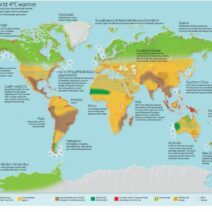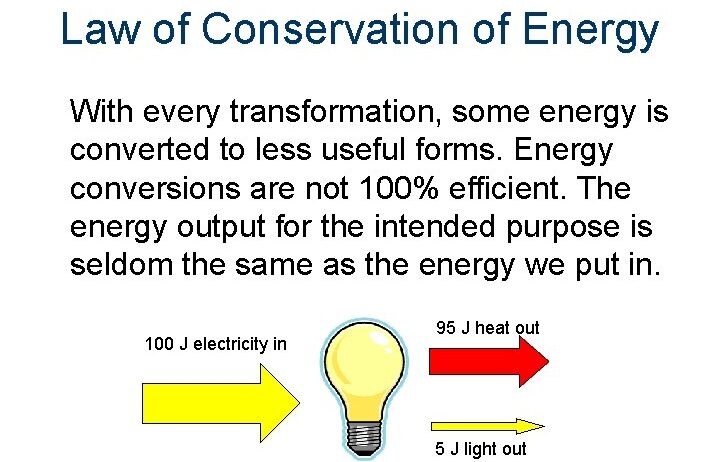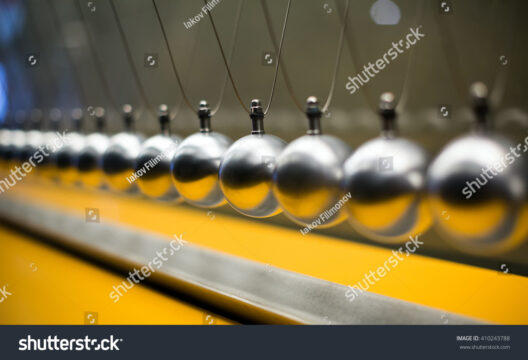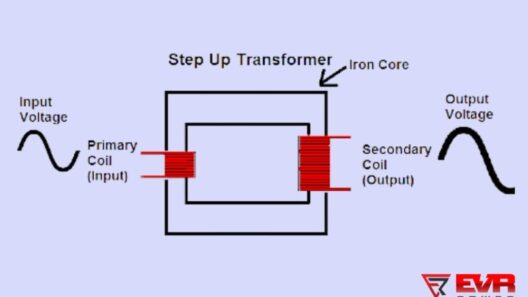Energy, in its myriad of forms, permeates every aspect of our lives. From the simple act of turning on a light bulb to the intricate processes powering entire cities, the conservation and transformation of energy is an essential facet of modern existence. However, the concept of conserving energy is not merely about reducing consumption; it’s about recognizing how objects around us can play a pivotal role in this ongoing quest. An exploration into the mechanics of energy conservation reveals both promises of a shift in perspective and echoes of curiosity regarding the objects we often overlook.
To elucidate how objects conserve energy, one must first understand the fundamental principle of energy transformation. Energy cannot be created or destroyed; it merely changes forms. This immutable law of thermodynamics governs every action. For instance, in a hydroelectric dam, kinetic energy from rushing water is converted into mechanical energy, which ultimately transforms into electrical energy. Every object involved in this transformation—from the turbine blades to the generators—plays an integral role in minimizing energy loss during this conversion process.
Similarly, consider the humble light bulb. Traditional incandescent bulbs convert only about 10% of the energy they consume into visible light; the rest dissipates as heat. However, the advent of compact fluorescent lamps (CFLs) and light-emitting diodes (LEDs) revolutionized this paradigm. By employing advanced materials and engineering, these modern bulbs drastically enhance energy efficiency. Such transitions signify not only a leap in technology but a material shift in consumer behavior and perception toward energy conservation.
Moreover, passive objects in our surroundings possess a surprising capability to influence energy conservation. For instance, the strategic placement of reflective materials in a building’s architecture can significantly reduce heating requirements. This technique, known as passive solar design, uses sunlight effectively to regulate indoor temperatures, thereby decreasing reliance on artificial heating systems. The very walls of a structure can serve as silent energy advocates when designed with these concepts in mind.
This entrenched ability of objects to engage in energy conservation extends beyond static structures. Take, for example, smart appliances. These devices are embedded with sensors and intelligent software that optimize energy usage based on user behavior. An intelligent thermostat learns patterns, adjusting heating and cooling schedules to align with when occupants are home or away. Consequently, these seemingly mundane objects evolve into active participants in energy efficiency, continually learning and adapting.
Furthermore, the materials of objects themselves have a profound impact on energy conservation. Renewable and recycled materials often yield lower energy demands during their production lifecycle compared to non-renewable counterparts. For instance, aluminum cans can be recycled with only 5% of the energy required to create new aluminum from ore. By choosing objects made from such eco-friendly resources, consumers inadvertently align their purchasing choices with broader environmental goals.
Yet, the conversation around objects and energy conservation cannot omit the role of design philosophy. Industrial design, as an academic discipline, embraces sustainability as a fundamental tenet. The principles of biomimicry bring forth innovative designs inspired by nature, exemplifying efficient energy use. Engineers and designers are now looking at how animals and plants have evolved to adapt to their environments, subsequently emulating these strategies in creating everyday objects. This cross-pollination of ideas fosters a greater understanding of energy efficiency, demonstrating profound respect for the environment.
Transitioning to the utilization of renewable energy sources, it becomes apparent that the objects we utilize can interface seamlessly with solar panels, wind turbines, and geothermal systems. These technologies transform natural energy into forms that power our lives, and every component—from inverters to battery storage—plays an indispensable role in ensuring efficiency. By harnessing renewable energy through thoughtfully designed objects, society can reduce its carbon footprint while simultaneously emphasizing the importance of energy conservation.
The convergence of technology and sustainable design leads to a plethora of innovations continuously redefining our relationship with energy. Smart grids illustrate this intersection, enhancing how energy is distributed to consumers. These systems utilize sophisticated algorithms and data analytics to optimize energy flow, allowing for greater conservation through real-time demand managing. Suddenly, objects embedded within this grid are not just passive recipients of energy; they become dynamic players in the energy conservation equation.
Perhaps the most compelling aspect of how objects can conserve energy is the underlying psychological shift they foster in consumption patterns. When individuals become aware of how everyday items contribute to energy conservation, positive behavioral changes ensue. This heightened consciousness fosters a culture of sustainability, encouraging more responsible choices that reverberate throughout the community. The stewardship of individual choices cascades into collective social movements, leading to broader systemic changes in energy policies and practices.
In conclusion, the realm of energy conservation is ripe with intrigue and possibility, far beyond mere technicalities. Objects, whether stationary or active, embody a dual role: they serve both as energy consumers and as guardians of efficiency. By re-envisioning the potential of everyday items and emphasizing their role in energy conservation, society can cultivate a deeper appreciation for the interconnectedness of all things. As we ponder the fabric of our existence, we are reminded that the quest for sustainability begins not only with individual actions but also in our perceptions of the objects surrounding us. The path to efficient energy use lies within the very materials we interact with daily, prompting a profound inquiry into how we choose to engage with the world around us.







